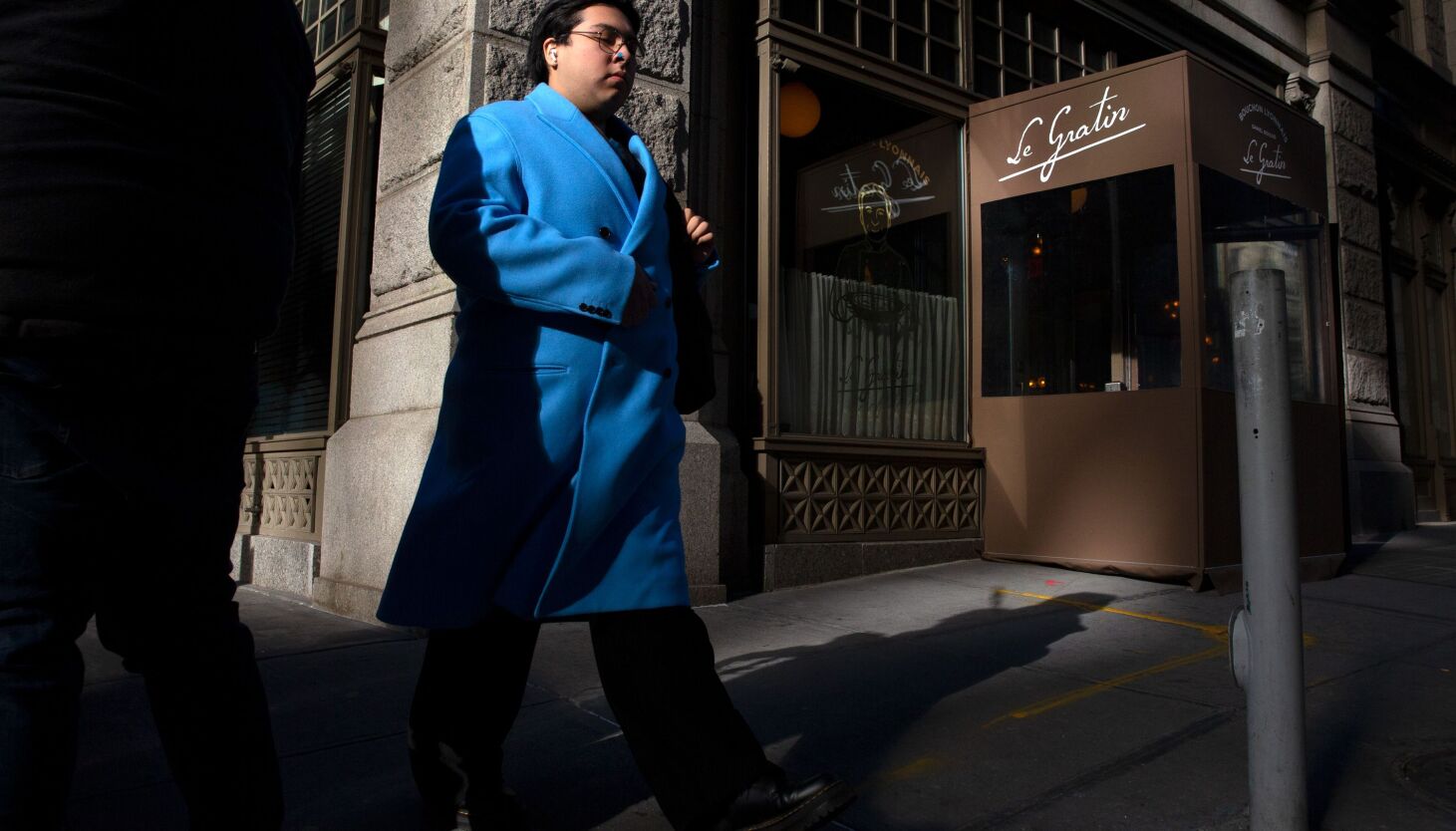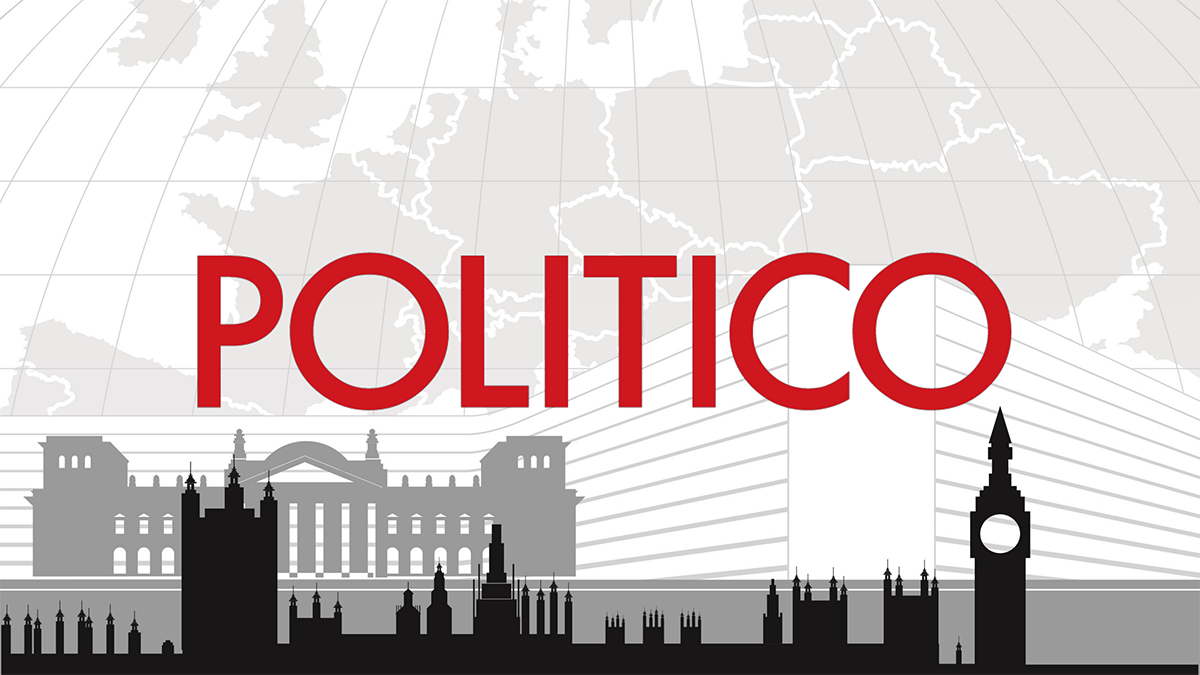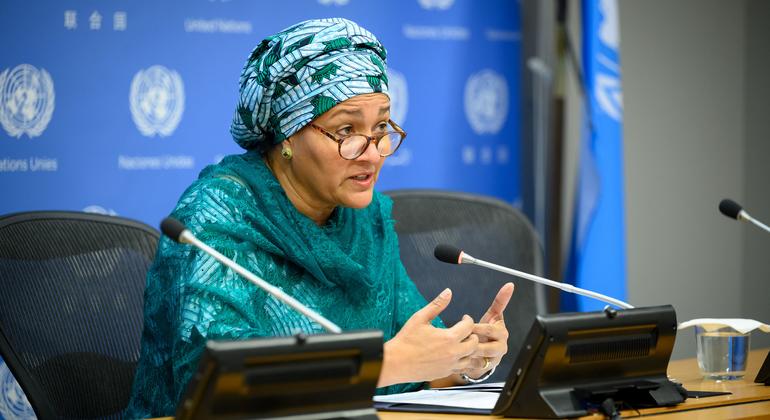At eleven o’clock on a Thursday morning in mid-December, the tourists staying at the historic Beekman Hotel in downtown Manhattan wandered in for a late breakfast at the Bar Room, eating croissants and sipping coffee in the hotel’s soaring atrium.
Reopened in 2014 since shuttering after the 2001 terrorist attack, the bustling hotel, which includes the Daniel Boulud eatery Le Gratin, epitomizes the city’s mixed recovery from the pandemic. The least expensive room for the week before Christmas costs $349 a night, rising to $450 for the week before New Year’s.
While offices remain a little more than half-filled downtown, as elsewhere in the city, tourism has rebounded more than expected. Meanwhile, most of the residents who left downtown in the early days of the pandemic have returned. As a result, the monthly pedestrian count by the Downtown Alliance is approaching 5.5 million — equal to pre-pandemic levels. This year, more retail stores will open than close for the first time since 2019, according to data from the Alliance.
“I came to the Daniel Boulud restaurant a couple of weeks ago and it was a mob scene. You couldn’t even get to the bathroom,” said an optimistic Jessica Lappin, president of the Alliance. “We have record rents for apartments. And while we have coalesced at three days a week in the office, three days a week still means you need an office.”
Downtown Manhattan represents what went right for the city’s economy in 2022, a year in which New York City added about 200,000 jobs and the unemployment rate declined sharply.
But unlike the nation as a whole, the city has not recovered all the jobs it lost in the recession. Forecasts released in the last few days from the city comptroller and Independent Budget Office predict a sharp slowdown next year that would reduce job growth to 50,000 — only a quarter of this year’s. If they are right, the full recovery from the pandemic won’t come until late 2024 or even 2025.
And while the pandemic almost exclusively hit lower-paid workers, what looms are layoffs and reduced bonuses for the city’s highest-paid and most-taxed workers, which poses a threat to the city’s economy and tax revenue.
“It looks more like a white-collar recession,” said New York State Deputy Comptroller Rahul Jain, who specializes in New York City issues.
Signs of Growth
In addition to job growth, the city’s overall unemployment rate this year fell to 5.8% from 7.4%, with employment in technology, business services, health care and social assistance topping pre-pandemic levels.
The citywide median asking rent for an apartment has risen to nearly $3,500 a month, according to Streeteasy, which is a likely sign that those who left the city in the pandemic have either returned or been replaced by new residents.
The number of tourists this year is expected to top 56 million, or 70% more than in 2021.
Given how hard the city was hit by the pandemic, and then by a shutdown that lasted longer than in other parts of the country, “we are moving in the right direction,” said Maria Torres-Springer, deputy mayor for economic and workforce development, at a recent Crain’s New York Business event.
Some area businesses, in fact, found opportunity in the pandemic. This week, Ashley Platt is moving her company LuxHoldups to a new spot at the Brooklyn Navy Yard, tripling her space to 6,500 square feet to keep up with burgeoning sales.
Platt, now 35 years old, was working for ad agencies when she couldn’t find the right curtain rods for her new apartment in the West Village. She solved her problem with home-customized Lucite rods. When she wound up with extra rods and sold them on Etsy, demand was strong.
Soon she was making more money from her sideline gig than from her agency job, so she rented space across from the Navy Yard, before eventually moving to the city-owned industrial facility a couple of years later.
When the pandemic inspired people to renovate and redecorate their homes, demand soared. Platt’s business providing all kinds of Lucite rods grew by 35% to almost $4 million this year.
This year she’s expanding her product line as the renovation boom runs its course.
“I always wanted to go more into tabletop objects — picture frames and trays — to reach a broader clientele,” Platt said. “I am not worried for my business because I see there is so much growth that we can do given what we have done.”
Lagging Job Recovery
The number the administration of Mayor Eric Adams does not want to spotlight is 85%, which is the percentage of jobs lost in the pandemic that have been recovered. Nationally, employment now exceeds the pre-pandemic record by about 1 million jobs. New York lags the rest of the country on job recovery because three key sectors remain more than 10% below their pre-pandemic levels.
Despite the tourism rebound and the fact that some parts of the hotel and restaurant business are booming, the leisure and hospitality sector still has a deficit of 60,000 jobs. Retail is 50,000 jobs below its peak and troubled by empty storefronts. In its annual survey to be released Wednesday, the Center for an Urban Future will report that the number of chain stores in the city is still 10% — 800 outlets — below the number in late 2019. The biggest declines are in Manhattan as its key business districts continue to struggle.
Construction, despite being one of the first industries to reopen, remains 20,000 jobs shy of its 2019 figure.
While many low-income workers struggled in the pandemic, Great Depression-level unemployment among young men has many economic watchers worried. The unemployment rate for men 16 to 24 years old is now close to 25% — up from about 18% in the shutdown year of 2020, according to a report issued this month by state comptroller Thomas DiNapoli. It also notes the highest rates are among young men of color.
The jobless rate for young women in New York has declined from 25% in 2020 to under 15% this year. The national rate for young people 16 to 24 is a touch over 8%.
“The city’s economic recovery will be stifled further if young people aren’t employed. We are also seeing more young people not return to the workforce at all,” said Jain, the deputy comptroller. “The city should focus on meaningful youth-employment programs that focus on vocational and learning opportunities, leveraging CUNY, and building up employment efforts for at-risk or low-income youth that lead to full-time, good-paying jobs.”
Wall Street Retrenching
The city’s economy — and especially its budget — was bolstered during the pandemic by a booming Wall Street with an assist from the growing tech presence in the city. Wall Street saw profits soar to a near-record $58 billion in 2021. Record financial industry bonuses pushed the average salary to just over $500,000. Wall Street firms and their employees accounted for 8% of all city tax revenue and more than 20% of state tax revenues.
But with the stock and bond markets now down from their record highs and profits through the first nine months, with profits lowered by more than 50%, Wall Street is retrenching.
Word leaked last week that Goldman Sachs, whose head count is up by a third since 2018, is considering eliminating 4,000 jobs. Layoffs are expected at Wells Fargo. At Credit Suisse, layoffs could affect more than 1,000 employees.
Bonuses are expected to plunge as much as 45%, according to the consulting firm Johnson Associates, which would be reflected in lower retail sales and income tax collections.
Meanwhile, fears are rising that the fast-growing technology sector will also falter. Already, layoffs in New York from Twitter, Amazon and Facebook parent Meta number more than 1,000.
The biggest problem may be one that is completely out of the city’s control: the Federal Reserve Board’s campaign to reduce inflation by sharply raising interest rates while slowing the economy. The Fed’s objective is a “soft landing,” meaning a reduction in employment without causing a recession. No one knows if that is possible.
“It’s a moment of higher-than-normal uncertainty, and things are hard to square,” City Comptroller Brad Lander told THE CITY. “The national economy is going to slow. We are lagging the U.S. already and we think there will be weakness in high-paying jobs and lower bonuses on Wall Street.”
Another major uncertainty, the comptroller notes, is the future of the city’s office towers, where the vacancy rate now tops 20% and long-term trends on occupancy are impossible to figure out.
As a result, Lander’s official economic forecast issued last week predicts the city will add only 51,000 jobs in 2023 and 38,700 jobs in 2024.
In a similar prediction, the Independent Budget Office on Monday estimated job gains of 45,000 next year and 90,000 in 2024.
Both forecasts would mean the city does not recover all its lost jobs until late 2024 or early 2025.
Forging Ahead
Maybe New York will get lucky, Lander speculated, because those sectors that lagged will outperform expectations next year. Tourism might be that boost for leisure and hospitality jobs — with NYC & Company, the city’s official tourism agency, forecasting 62 million visitors next year, a 5% increase from this year and only 5 million short of 2019’s record.
More tourists and office workers are crucial to Kevin Yang, who invested $1 million — comprised of his own money and borrowed funds — to open a bagel and sandwich shop called BTS in a narrow space on 40th Street between 7th and 8th Avenues.
It’s the 45-year-old’s first time as an owner, having spent his career opening and running these kinds of restaurants for other people. Yang was blindsided when another bagel shop opened down the block after he had committed to his location.
Still, he’s optimistic because the $22,000 per month rent deal he negotiated is below the market rate, and he’s confident he knows how to run the business. His shop has been open for a month.
“Once we get everything settled, we will do a grand opening, we’ll do promotions and we’ll go out there and market on Instagram and use influencers on social media,” Yang said, with the kind of confidence New York will need if the economy is to overcome both its pandemic deficit and the weakening of key industries like Wall Street.




